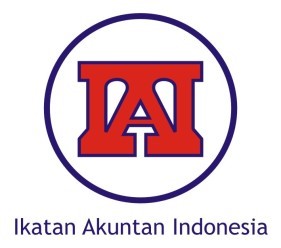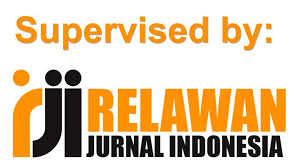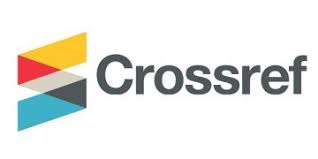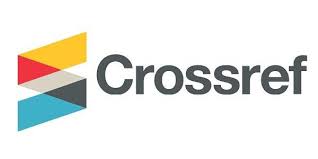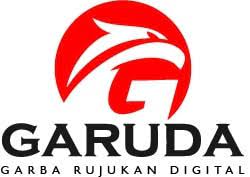Submissions
Submission Preparation Checklist
As part of the submission process, authors are required to check off their submission's compliance with all of the following items, and submissions may be returned to authors that do not adhere to these guidelines.- The submission has not been previously published, nor is it before another journal for consideration (or an explanation has been provided in Comments to the Editor).
- The submission file is in OpenOffice, Microsoft Word, or RTF document file format.
- Where available, URLs for the references have been provided.
- Papers are written in English. The text is single-spaced; uses a 12-point font; employs italics, rather than underlining (except with URL addresses); and all illustrations, figures, and tables are placed within the text at the appropriate points, rather than at the end.
- The text adheres to the stylistic and bibliographic requirements outlined in the Author Guidelines.
Author Guidelines
Author Guidelines
GENERAL INSTRUCTIONS
The manuscripts can be accepted/published in the Journal of International Public Sector Accounting Review (IPSAR) if the author meets the following requirements:
- The paper must be the author's original work that has never been accepted/published in any journal. Authors are responsible for ensuring the originality of the content of their paper and shall avoid plagiarism.
- Papers are written in English. Articles are typed in MS Word/similar program with the format [.docx] on A4 paper with a 2.5 cm top margin, 2 cm bottom edge, 2 cm right, and 2.5 cm left. Papers must be written in Cambrian letters, size 10, and single-spaced.
- Authors submit digital manuscripts in [.docx] format through the IPSAR's website. At the time of submission of the article manuscript, the author must upload the Author’s Curriculum Vitae.
- Manuscript must follow IPSAR's template of manuscript. Template for authors can be downloaded here.
PAPER STRUCTURE
The full paper manuscript contains 6,000 and 8,000 words, including abstracts, references, tables, figures, and graphics. Articles are written by following the following systematics:
Titles
The article's title must be clear, concise, and straightforward, and no more than 14 words. The title is written in capital letters, center, Cambria, size 14, bold.
Author's name
The author's name is written without an academic degree. An article writer can be more than one author. The author also includes the author's affiliation (institution) and the address city of the institution. The name of the affiliation/institution is written in full (not an acronym). For correspondence addresses, it is recommended to use the email address of the first author.
The structure of writing the article title and author's name is (a) article title, (b) first author's name, (c) first author's affiliation, (d) first author's institution address, (e) first author's email address. For the second author and so on, follow the order as the first author.
An example of writing the title and author's name can be seen in the article template.
Authors are expected to consider carefully the list and order of authors before submitting their manuscript and provide the definitive list of authors at the time of the original submission. Any addition, deletion, or rearrangement of author names in the authorship list should be made only before the manuscript has been accepted and only if approved by the journal Editor. To request such a change, the Editor must receive the following from the corresponding author: (a) the reason for the change in the author list and (b) written confirmation (e-mail, letter) from all authors that they agree with the addition, removal, or rearrangement. In the case of the addition or removal of authors, this includes confirmation from the author being added or removed.
Only in exceptional circumstances will the Editor consider the addition, deletion, or rearrangement of authors after the manuscript has been accepted. While the Editor considers the request, publication of the manuscript will be suspended. If the manuscript has already been published in an online issue, any requests approved by the Editor will result in a corrigendum.
Abstract and Keywords
The Abstract’s length is not more than 250 words. The abstract is written in one paragraph that contains the background, research objectives, concepts/theories, methods, results/findings, and conclusions/implications of the study. Abstract with 3-5 keywords, with a comma (,) and in alphabetical order.
Introduction
The Introduction consists of no more than four concise paragraphs. It should also contain background and research objectives that explain phenomena and research problems. It should also be related to previous studies, especially research gaps or limitations from previous studies. The author hopes to fill in the research gap/limitations, or the author must briefly explain the purpose of writing at the end of the Introduction. The Introduction is in the form of a narrative and does not use numbering.
In the Introduction section, the author(s) should include a summary box called Applications for Practice that contains (a) the most important finding(s) for policymakers, and (b) recommendation(s) for policy formulation and implementation. It should be written in clear and simple language and presented in bullet points. It should not use special terms commonly used in scientific papers.
Literature Review And Hypothesis Development
This section contains previous literatures related to the research and explains the hypothesis development. This section describes the theoretical basis used as the basis for analysis in research. This section also contains previous studies, research gaps, debates, and developments in the concepts or theories used. The literature used must be under the topic of the article being written. The author can provide a logical basis for developing research hypotheses or propositions and research models. Only literature review for qualitative research.
Method
This section includes the type of research, research design, population and sample, data collection techniques and instruments, measurement and operational definition of variables, and data analysis procedures.
Results
Results are research findings and should be clear and concise without opinions. This section contains the results of data analysis or statistical descriptions required. Authors using quantitative research methods are required to provide a descriptive statistical table. Tables/illustrations are placed in this section (at most six tables/illustrations) with a brief title. Authors can present an explanation/analysis of each table/illustration contained. Tables/illustrations that are more than one page in size can be placed in the Appendix.
Discussion and Conclusion
The Discussion section is the author's interpretation of the research findings that can answer the limitations/research gaps of previous research and not repeat the research findings. The Discussion section includes how the research results related to the research objectives (what)? Do the authors provide a scientific interpretation of each finding presented (why)? Moreover, are the research results consistent or contradictory to the research results from other researchers (what else)?
This section is the answer to the research objectives. The conclusions include a summary of the research, the contribution/implications of the study, the limitations of the study, and as far as possible, suggest potential areas for further research. The Conclusion section is written in a clear, concise, and does not re-quote previous research. In the form of a narrative, the conclusions presented do not use numbering and are not more than two paragraphs.
Acknowledgments
Authors can include acknowledgments in their articles, including information about financial support received by authors in their research. The Acknowledgement section is loaded into the manuscript after the author gets feedback on the review results from Mitra Bestari or reviewers.
References
This section contains reference sources cited by the author, both from books, book chapters, scientific articles, and official releases from institutions relevant to the research. References used must consist of at least 15 up-to-date references, and 80% of references used are not more than the last ten years. There are at least five articles (and/or 50%) references from reputable international journals. Authors should not use online news sites, blogs, and Wikipedia as references.
The References are written using the American Psychological Association (APA) writing format. For convenience and standardization of reference writing, authors must use reference manager tools such as EndNote, Zotero, Mendeley, or RefWorks.
The writing format is (a) hanging indent 1 cm, (b) Cambria font size 10, and (c) 12 pt line spacing.
Reference example (https://apastyle.apa.org/instructional-aids/reference-examples.pdf) :
Journal Article
Edwards, A. A., Steacy, L. M., Siegelman, N., Rigobon, V. M., Kearns, D. M., Rueckl, J. G., & Compton, D. L. (2022). Unpacking the unique relationship between set for variability and word reading development: Examining word- and child-level predictors of performance. Journal of Educational Psychology, 114(6), 1242–1256. https://doi.org/10.1037/edu0000696
Online Magazine Article
Thomson, J. (2022, September 8). Massive, strange white structures appear on Utah’s Great Salt Lake. Newsweek. https://www.newsweek.com/mysterious-mounds-great-salt-lake-utah-explainedmirabilite-1741151
Print Magazine Article
Nicholl, K. (2020, May). A royal spark. Vanity Fair, 62(5), 56–65, 100.
Online Newspaper Article
Roberts, S. (2020, April 9). Early string ties us to Neanderthals. The New York Times. https://www.nytimes.com/2020/04/09/science/neanderthals-fiber-string-math.html
Print Newspaper Article
Reynolds, G. (2019, April 9). Different strokes for athletic hearts. The New York Times, D4.
Blog Post
Rutledge, P. (2019, March 11). The upside of social media. The Media Psychology Blog. https://www.pamelarutledge.com/2019/03/11/the-upside-of-social-media/
Authored Book
Kaufman, K. A., Glass, C. R., & Pineau, T. R. (2018). Mindful sport performance enhancement: Mental training for athletes and coaches. American Psychological Association. https://doi.org/10.1037/0000048-000
Edited Book Chapter
Zeleke, W. A., Hughes, T. L., & Drozda, N. (2020). Home–school collaboration to promote mind–body health. In C. Maykel & M. A. Bray (Eds.), Promoting mind–body health in schools: Interventions for mental health professionals (pp. 11–26). American Psychological Association. https://doi.org/10.1037/0000157-002
Online Dictionary Entry
American Psychological Association. (n.d.). Internet addiction. In APA dictionary of psychology. Retrieved April 24, 2022, from https://dictionary.apa.org/internet-addiction
Report by a Group Author
World Health Organization. (2014). Comprehensive implementation plan on maternal, infant and young child nutrition. https://apps.who.int/iris/bitstream/handle/10665/113048/WHO_NMH_NHD_14.1_eng.pdf?ua=1
Report by Individual Authors
Winthrop, R., Ziegler, L., Handa, R., & Fakoya, F. (2019). How playful learning can help leapfrog progress in education. Center for Universal Education at Brookings. https://www.brookings.edu/wp-content/uploads/2019/04/how_playful_learning_can_help_leapfrog_progress_in_education.pdf
Press Release
American Psychological Association. (2020, March 2). APA reaffirms psychologists’ role in combating climate change [Press release]. https://www.apa.org/news/press/releases/2020/03/combatingclimate-change
Conference Session
Davidson, R. J. (2019, August 8–11). Well-being is a skill [Conference session]. APA 2019 Convention, Chicago, IL, United States. https://irp-cdn.multiscreensite.com/a5ea5d51/files/uploaded/APA2019_Program_190708.pdf
Dissertation From a Database
Horvath-Plyman, M. (2018). Social media and the college student journey: An examination of how social media use impacts social capital and affects college choice, access, and transition (Publication No. 10937367). [Doctoral dissertation, New York University]. ProQuest Dissertations and Theses Global.
Preprint Article
Latimier, A., Peyre, H., & Ramus, F. (2020). A meta-analytic review of the benefit of spacing out retrieval practice episodes on retention. PsyArXiv. https://psyarxiv.com/kzy7u/
Data Set
O’Donohue, W. (2017). Content analysis of undergraduate psychology textbooks (ICPSR 21600; Version V1) [Data set]. Inter-university Consortium for Political and Social Research. https://doi.org/10.3886/ICPSR36966.v1
Film or Video
Docter, P., & Del Carmen, R. (Directors). (2015). Inside out [Film]. Walt Disney Pictures; Pixar Animation Studios.
TV Series Episode
Dippold, K. (Writer), & Trim, M. (Director). (2011, April 14). Fancy party (Season 3, Episode 9) [TV series episode]. In G. Daniels, H. Klein, D. Miner, & M. Schur (Executive Producers), Parks and recreation. Deedle-Dee Productions; Fremulon; 3 Arts Entertainment; Universal Media Studios.
Webinar
Kamin, H. S., Lee, C. L., & McAdoo, T. L. (2020). Creating references using seventh edition APA Style [Webinar]. American Psychological Association. https://apastyle.apa.org/instructional-aids/tutorialswebinars
YouTube Video
Above The Noise. (2017, October 18). Can procrastination be a good thing? [Video]. YouTube. https://www.youtube.com/watch?v=FQMwmBNNOnQ
Song or Track
Nirvana. (1991). Smells like teen spirit [Song]. On Nevermind. DGC.
Radio Broadcast
Hersher, R. (2020, March 19). Spring starts today all over America, which is weird [Radio broadcast]. NPR. https://www.npr.org/2020/03/19/817237429/spring-starts-today-all-over america-which-is-weird
Podcast Episode
Santos, L. (Host). (n.d.) Psychopaths and superheroes (No. 1) [Audio podcast episode]. In The happiness lab with Dr. Laurie Santos. Pushkin Industries. https://www.happinesslab.fm/season-2-episodes/episode-1
Infographic
American Psychological Association. (n.d.). Data sharing [Infographic]. https://www.apa.org/pubs/journals/data-sharing-infographic.pdf
PowerPoint From a Classroom Website
Mack, R., & Spake, G. (2018). Citing open source images and formatting references for presentations [PowerPoint slides]. Canvas@FNU. https://fnu.onelogin.com/login
Tweet
Obama, B. [@BarackObama]. (2020, April 7). It’s World Health Day, and we owe a profound debt of gratitude to all our medical professionals. They’re still giving [Tweet]. Twitter. https://twitter.com/BarackObama/status/1247555328365023238
Open Educational Resource
Fagan, J. (2019, March 25). Nursing clinical brain. OER Commons. Retrieved January 7, 2020, from https://www.oercommons.org/authoring/53029-nursing-clinical-brain/view
Webpage
Chandler, N. (2020, April 9). What’s the difference between Sasquatch and Bigfoot? howstuffworks. https://science.howstuffworks.com/science-vs-myth/strange-creatures/sasquatch-bigfootdifference.htm
Webpage on a News Website
Machado, J., & Turner, K. (2020, March 7). The future of feminism. Vox. https://www.vox.com/identities/2020/3/7/21163193/international-womens-day-2020
Webpage With a Retrieval Date
Center for Systems Science and Engineering. (2020, May 6). COVID-19 dashboard by the Center for Systems Science and Engineering (CSSE) at Johns Hopkins University (JHU). Johns Hopkins University & Medicine, Coronavirus Resource Center. Retrieved May 6, 2020, from https://coronavirus.jhu.edu/map.html
Articles
Section default policyPrivacy Statement
The names and email addresses entered in this journal site will be used exclusively for the stated purposes of this journal and will not be made available for any other purpose or to any other party.




